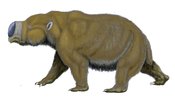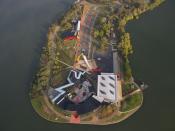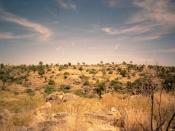1.Explain the importance of the study of past environments in predicting the impact of human activity in present environments.
Situations that occur in today's environment have happened in the past, so a close study of past environments leads to a knowledge of past environments and conditions which allows a better understanding of present-day ecosystems whic helps us to predict the human impact in present environments which leads to harmful practices being recognised and conservation projects.
2.Identify the ways in which palaeontology assists understanding of the factors that may determine distribution of flora and fauna in present and future environments.
FACTORS THAT MAY DETERMINE THE DISTRIBUTION OF FLORA AND FAUNA
vClimate
âÂÂTemperature; hot, cold
âÂÂDry. wet
vContinental drift
âÂÂLand masses separating
vChange of landscape
âÂÂVolcanic
âÂÂFlat
âÂÂOceanic
âÂÂMountainous
vWater availability
vAbundance of other species
âÂÂPredators
âÂÂToo crowded
vFood availability
Palaeontology assists the understanding of these factors by providing evidence as to how much of an impact these factors had in past environments, analysis of this evidence allows a moderately accurate prediction of how they will affect present and future environments.
3.Explain the need to maintain biodiversity.
Biodiversity is the sum of all the different species of animals, plants, fungi and microbial organisms living on Earth and the variety of habitats in which they live.
Biodiversity is essential for maintaining the functions of natural systems on Earth.
Without biodiversity there would be;
ûno clean water
ûno clean air
ûno productive soil
ûno food
ûno natural recycling system
ûno humans!
Human activities depend on biodiversity
Eg.
âÂÂAgriculture - disease free crops
âÂÂForesting - life, density of forests
âÂÂFisheries - food, concentration of marine life
âÂÂTourism - places for tourists to visit
âÂÂConstruction - materials
âÂÂTextile manufacturing - materials
âÂÂMedicine - lifesaving medicine
4. Gather, process and analyse information from secondary...


